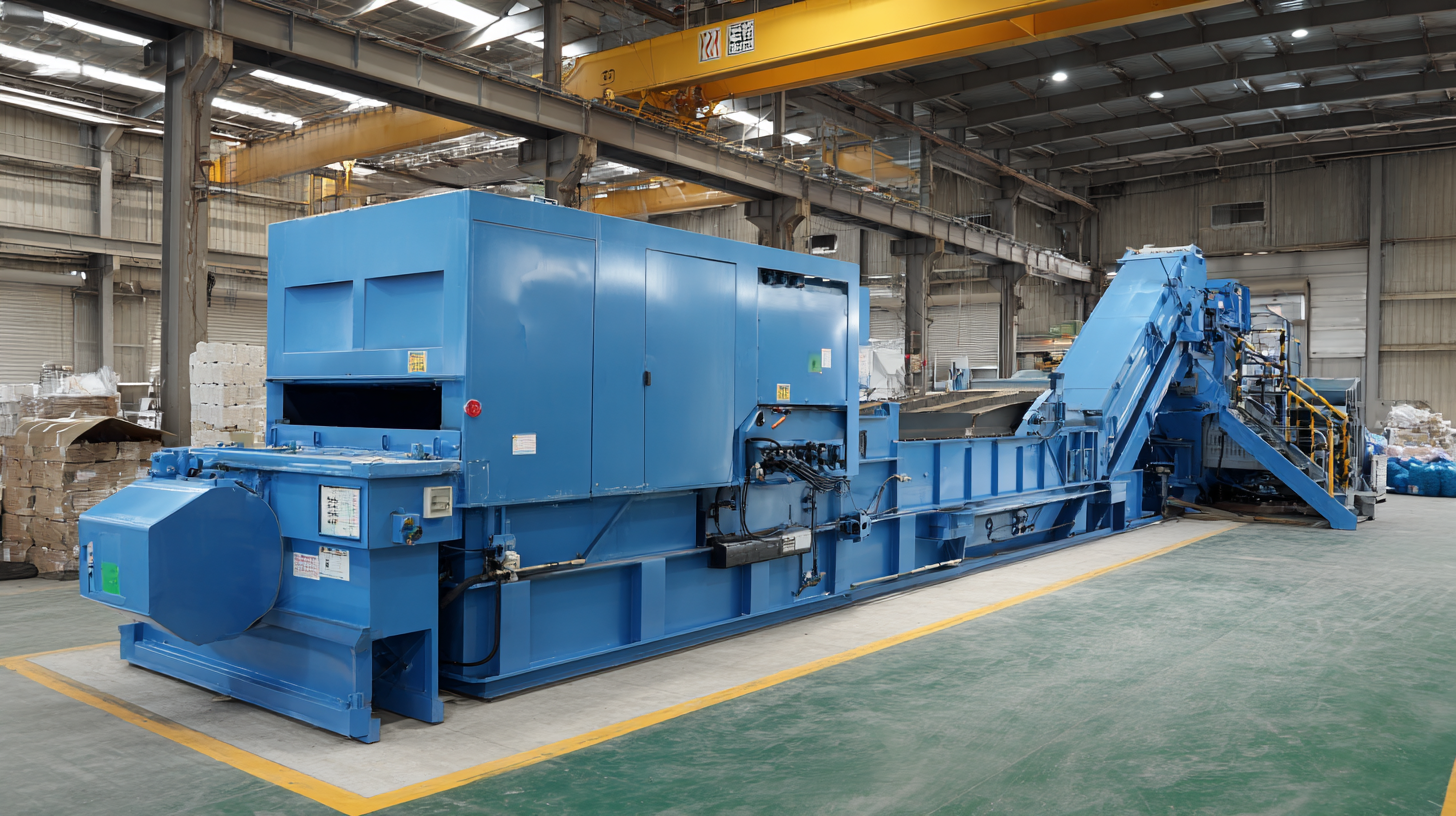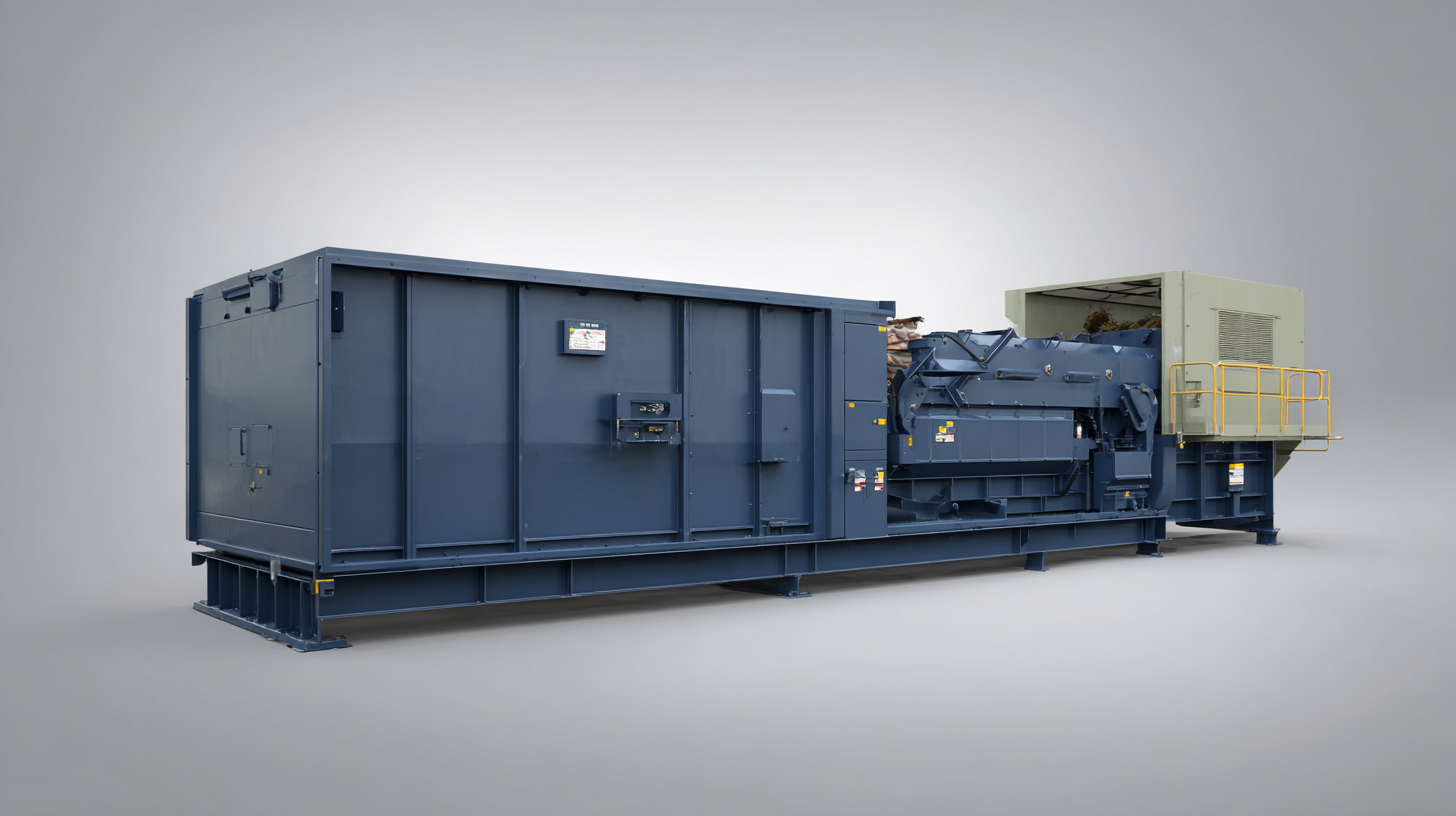As we move forward into 2025, the landscape of waste management is evolving rapidly, driven by technological advancements and growing environmental concerns. One key innovation leading this charge is the Domestic Refuse Crusher, a vital tool in both household and commercial settings that helps streamline waste disposal and minimize landfill contributions.

This blog aims to unveil the latest technologies in Domestic Refuse Crushers, highlighting their importance in optimizing waste management strategies. Furthermore, we will provide insights on how to choose high-quality manufacturers, ensuring that you invest in reliable and efficient equipment.
Join us as we explore the future of refuse crushing technologies and offer practical tips for enhancing your waste management processes, making them more sustainable and effective in the years to come.
The domestic refuse crusher market is undergoing significant innovation, with emerging technologies set to redefine waste management by 2025. According to a report by MarketsandMarkets, the global refuse crusher market is projected to grow at a CAGR of 5.8% from 2023 to 2025, indicating a strong demand for efficient waste processing solutions. Innovations such as advanced shredding mechanisms, smart sensors, and energy-efficient motors are becoming crucial in enhancing the operational efficiency of these machines. These developments aim to reduce the volume of waste significantly, with some advanced models capable of processing up to 90% of the refuse volume, making them an ideal choice for households seeking to minimize their ecological footprint.
Additionally, emerging trends such as the integration of IoT technology in domestic refuse crushers are reshaping the landscape of waste management. Smart crushers equipped with connectivity features allow users to monitor operational metrics remotely, facilitating timely maintenance and optimizing performance. According to Statista, the adoption of IoT in household waste management systems is expected to increase by 20% year over year until 2025. These technologies not only promote sustainability but also empower users with data-driven insights, thereby enhancing their waste disposal practices. As we move towards 2025, the combination of smarter technology and user-centric design will undoubtedly revolutionize how we approach waste management at home.

In the evolving landscape of waste management, the next generation of domestic refuse crushers is poised to make a significant impact by 2025. Key features to look for in these advanced machines include enhanced safety protocols, increased operational efficiency, and a strong emphasis on sustainability. For instance, recent innovations in crushing technology have highlighted a 20% increase in energy efficiency, which not only reduces operational costs but also aligns with the global push towards greener practices.
Another critical aspect is automation. As industries pivot towards more automated solutions, integrating smart technology into waste crushers can streamline processes and improve accuracy in recycling and waste sorting. Companies are increasingly adopting features like real-time monitoring and adaptive crushing settings, enabling them to optimize performance based on the type and volume of waste being processed. This shift not only enhances productivity but also promotes environmental responsibility, as optimized operations can lead to reduced landfill contributions. By investing in these next-gen technologies, businesses can not only elevate their waste management systems but also contribute positively to sustainability goals.
| Feature | Importance | Technology Level | Projected Adoption Rate (%) |
|---|---|---|---|
| Energy Efficiency | Reduces operational costs | High | 75 |
| Smart Sensors | Enhances operational efficiency | Medium | 60 |
| Noise Reduction | Improves user experience | High | 70 |
| Automatic Feed | Increases throughput | High | 80 |
| Modular Design | Facilitates easy maintenance | Medium | 65 |
| User-Friendly Interface | Improves usability | High | 85 |
The integration of AI and automation in waste management is reshaping the landscape of refuse processing technologies. As we look ahead to 2025, innovative solutions are emerging, particularly in the realm of waste-to-energy systems like incineration. These advanced methods not only minimize waste volume but also transform municipal solid waste into valuable electrical energy, addressing both environmental concerns and energy needs.
 To optimize your waste management practices, consider implementing smart sorting technologies that leverage AI to identify and separate recyclables from general waste. This can enhance efficiency and ensure that recyclable materials are properly processed, reducing landfill dependency. Additionally, adopting automated waste collection systems can streamline operations and allow for better resource allocation throughout your waste management strategy.
To optimize your waste management practices, consider implementing smart sorting technologies that leverage AI to identify and separate recyclables from general waste. This can enhance efficiency and ensure that recyclable materials are properly processed, reducing landfill dependency. Additionally, adopting automated waste collection systems can streamline operations and allow for better resource allocation throughout your waste management strategy.
Finally, partnering with tech-driven companies that specialize in waste-to-energy solutions can significantly improve the sustainability of your operations. Exploring these avenues not only contributes to a cleaner environment but also aligns with evolving regulatory demands and consumer expectations regarding waste management practices.
As the global emphasis on sustainability intensifies, integrating eco-friendly solutions with domestic refuse crusher technologies has become a priority for waste management strategies. A report by the Environmental Protection Agency (EPA) indicates that in 2021, about 292.4 million tons of municipal solid waste were generated in the U.S. alone, with only 35% being recycled or composted. This highlights a critical need for innovative systems, where refuse crushers can play a vital role in processing waste more efficiently while minimizing environmental impact.
The future of refuse crushers will increasingly incorporate sustainable materials and energy-efficient designs. Technologies such as high-efficiency shredders and compactors are emerging, which not only reduce the volume of waste but also lower greenhouse gas emissions. According to a study by MarketsandMarkets, the global waste management market is projected to reach $528.8 billion by 2025, with a significant uptick in the adoption of eco-friendly waste processing technologies. By opting for crushers that integrate renewable energy sources and advanced recycling capabilities, households can contribute to a more sustainable waste management ecosystem while optimizing operational costs.
In today’s rapidly evolving waste management landscape, optimizing your system is crucial for maximizing efficiency and minimizing environmental impact. One key strategy is to implement a dynamic scheduling system for waste collection. By analyzing peak waste generation times, you can adjust your collection frequency to ensure timely pickups, reducing overflow and enhancing operational efficiency.
Another effective tip is to incorporate smart waste management technology. Utilizing sensors in refuse bins can help monitor waste levels in real-time, allowing for more informed decision-making and preventing unnecessary collections. Additionally, consider investing in high-quality domestic refuse crushers that can efficiently handle various waste materials, reducing the overall volume and frequency of disposal trips.
Lastly, fostering community engagement can significantly impact your waste management practices. Educating residents about the importance of proper waste segregation and responsible disposal can lead to increased recycling rates and decreased contamination in recyclables. Hosting workshops and providing resources for effective waste sorting can empower individuals, ultimately resulting in a more efficient waste management system for your community.
